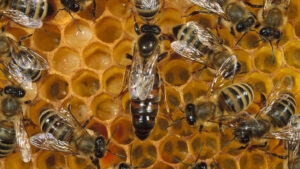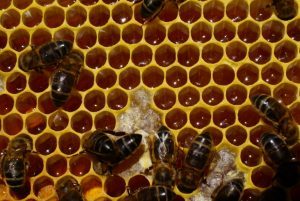Bees are not only important members of the ecosystem, but also for their own colonies. But they stand out not only for their honey and benefits for the environment, but also for the organization of their hives. These insects have the ability to build double-sided panels with incredible and precise symmetry, where each cell is an exact reflection of the other.
According to the study published in the specialized site Current Biology, it was demonstrated that the structure of the hives is a response to thermal signals, which serve as guides in the creation of these structures.
To delve into this strange behavior, scientists from the Smith Bee Lab at Auburn University studied the bees using transparent hives. After several experiments, the researchers were able to create detailed maps of the hives, as well as document how the bees replicate the content from one side of the comb to the opposite side.
Furthermore, researchers discovered that bees can establish this symmetrical arrangement without the need to be in direct contact with other colonies, only by isolating two different groups that managed to replicate the same distribution in their hives. This is how they discovered that heat played a crucial role in symmetrical organization.
 bee species[/caption>
bee species[/caption>
Advantages of Hive Symmetry
This symmetrical structure not only results in aesthetic harmony, but also is fundamental for the survival and growth of colonies. This is because double-sided hives allow for a more stable thermal environment, which is key for the development of the brood.
On the other hand, this arrangement helps in the accelerated growth of the colony, as it was proven that colonies with double panels produce 60% more brood in a period of ten days compared to those that do not have them.
These benefits are nothing more than a result of efficiency in the distribution of their most important resources, pollen and honey, which are stored in mirrored sections to optimize access and use.
 The construction of the panels is beneficial for the colony.
The construction of the panels is beneficial for the colony.
A Natural Ability
According to experts, bees’ ability to build symmetrical panels could have been acquired naturally. This is because the double-sided design allows them to better adapt to different environments and optimally utilize internal resources, maximizing the survival and reproduction of the colony.
This architectural behavior is not exclusive to a single bee species, but is also found in several species of the genus Apis, suggesting that this trait is fundamental in honeybees. This discovery revealed that these insects have profound implications for the conservation of these essential species in the ecosystem.
Creating habitats that respect the natural architecture of bee hives helps minimize human disturbances, while ensuring access to suitable floral sources that would favor their survival and population stability.
Do you already know our YouTube channel? Subscribe now!

